The Best (and Worst) Oils for Cooking
Whether you are sautéing up some crisp veggies, popping some fresh popcorn, or browning some roasted potatoes, you need some type of fat involved to make the magic happen.
For years we were told to avoid fat at all costs. The hype was all about low or no fat, and the world was using toxic non-stick pans and synthetic, chemical-filled cooking sprays.
However, we now know this was actually quite terrible advice, and this shift to low fat and poor quality oils has taken a real toll on our health, and we are finally beginning to shift back to more natural options.
There is still a lot of confusion on which cooking oils are “good” and which ones are “bad” for your overall health.
There is a long list of different cooking oils to choose from, all with a variety of different health claims.
So today we’re going to break down which ones we feel truly pass the health test, and which ones are better off used to grease a squeaky door hinge.
What’s Cookin’, Good Lookin’?

Choosing the correct oil to use when cooking has a lot to do with what you are cooking and how you are cooking it.
For example, different oils have different smoke points.
The smoke point of an oil is how hot the oil can get before it starts to smoke and the heat begins to degrade the structure and cause the oil to oxidize.
Ingesting oils that have been oxidized can lead to build-up of many harmful free radicals in the body. This is particularly true of oils that are high in polyunsaturated fats, including most vegetable oils like soybean and canola. These types of oils can even release carcinogenic compounds that may contribute to lung cancer when inhaled.
Smoke Points of Popular Cooking Oils

Our Top Cooking Oil Picks
Avocado Oil

Like its whole food counterpart, avocado oil is full of healthy monounsaturated fat. Studies have shown that monounsaturated fats can help lower your LDL (bad) cholesterol level. Keeping your LDL level low reduces your risk for heart disease and stroke.
Avocado oil contains chlorophyll, a natural source of magnesium, which naturally helps remove heavy metals like mercury and leads from the liver, kidneys, brain, and other organs.
The high levels of monounsaturated fats found in avocado oil also help your body absorb many key fat-soluble vitamins and nutrients.


This oil has a very mild, nondistinctive flavor so it does not affect the taste of whatever you are preparing, making it a versatile option for many dishes.
Avocado oil is also a great pick for high-temperature cooking, as it has the highest known smoke point of any plant oil at 520ºF (271ºC) for refined and up to 480ºF (249ºC) for unrefined.
It’s a rock star for frying, searing, roasting, and grilling. It can also be used beautifully in baking dishes.
The one downside of this oil is the cost.
Avocados can be quite pricey, and it takes 15 to 20 avocados to make one 250-milliliter (eight-ounce) bottle of oil.
So, although it has a high smoke point and technically can be used for deep frying, its price point makes it quite an expensive option for this purpose. It is more cost-effective to save this oil for sautéing and shallow frying.
Note: If you want to try avocado oil, Costco has a great brand called Chosen Foods, and it’s easily the best price you will find for a quality, non-GMO avocado oil.
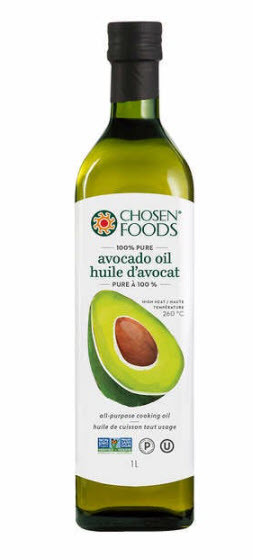
Coconut Oil

Despite their name, coconuts are not actually nuts but rather are classified as a fibrous one-seeded drupe.
A drupe is a fruit with a hard stony covering enclosing the seed (like a peach or olive) and comes from the word “drupa” meaning overripe olive.
Coconut oil is made by pressing fresh coconut meat or dried coconut meat, called copra.
Virgin coconut oil uses fresh meat, while refined coconut oil typically uses copra. Unlike olive oil, the terms “virgin” and “extra virgin” are not regulated with coconut oil, so it is important to know and trust the supplier you choose.
Coconut oil contains about 40% lauric acid. This fatty acid has a higher melting point, causing coconut oil to be solid at room temperature. In comparison, most other cooking oils contain only trace amounts of it.
Studies show that lauric acid increases the blood levels of cholesterol, but this is mostly due to an increase in cholesterol bound to high-density lipoproteins (HDL).
An increase in HDL cholesterol, relative to total cholesterol, has been associated with a reduced risk of heart disease.

Virgin coconut oil does have quite a distinct coconut flavor which lends well to some dishes but can overpower others.
Unrefined virgin coconut oil has a smoke point of about 350.
The processing steps taken to produce refined coconut oil may include degumming, which is basically, a cold shower for the coconut oil to remove naturally occurring gums; neutralizing, a process by which free fatty acids are removed to prevent the risk of oxidation; bleaching, which doesn’t actually involve bleach at all but is accomplished with clay filtering; and finally, deodorizing, which is when the oil is heated to remove any coconut flavor and taste.
Refined coconut oil is pretty close to completely tasteless and odorless, and it boasts a slightly higher smoke point of 400 degrees Fahrenheit. It’s also worth noting that, although we typically associate processing with loss of nutritional value, that is not the case with refined coconut oil.

Coconut oil also comes in a fractionated form, which remains liquid even at colder temperatures. Fractionated coconut oil is able to stay in liquid form because its lauric acid has been removed.
This also means that this form of the oil does not offer lauric acids many health benefits.
Aside from being used in cooking, coconut oil is well known for its uses in different beauty applications.
It is commonly used as a skin moisturizer and is popular as a hair treatment. It has been used for centuries in South East Asian and South American cultures to help maintain soft skin and strong, shiny hair!
It is also a favorite oil used for oiling pulling, which is the daily practice of swishing a spoonful of oil around your mouth for about 5 minutes to help improve and protect oral health!

Coconut oil is a great choice for use in baking as its coconutty flavor is welcome in many dishes.
You can even make your own homemade healthy chocolate by just melting 1/4 cup of coconut oil with 2 tablespoons of maple syrup and 1/4 cup cocoa powder. You can also add a few tablespoons of collagen powder for some extra texture and health power!

Pour the combined ingredients in a pool on a parchment-lined cookie sheet and chill in the freezer for 1/2 hr. You can add different toppings before popping in the freezer such as sea salt, chopped pistachio, dried fruits, or even a sprinkle of cayenne pepper! Once set, break up into chunks and keep stored in the fridge!
Our favorite brand of Coconut oil is from Nutiva, which makes a cold pressed, virgin non-GMO version. Available at most stores, with the best pricing available at Costco or Sam’s Club.
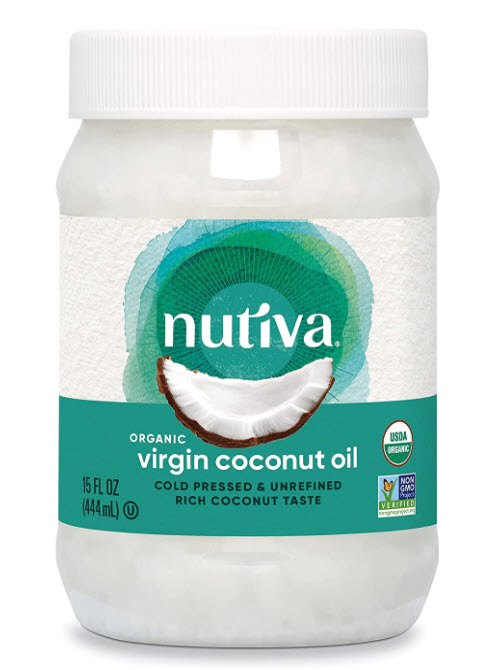
Olive Oil

Olive oil has been a popular choice for use in food preparation for centuries, with its production beginning around 4000 bc and still remains a dietary staple for some of the world’s healthiest populations.
As with most other cold-pressed oils, olive oil comes in a few different grades. In our opinion, Extra Virgin and Virgin Olive oil are the only ones worth consuming.
These are the first and second presses of the olive pulp. The other grades of olive oil involve quite a lot of processing and offer minimal to no health benefits compared to Extra Virgin and Virgin Olive Oil.

While saturated fats like coconut oil are very resistant to heat, most vegetable oils contain polyunsaturated fats. Olive oil, on the other hand, contains mostly monounsaturated fats.
It was once generally accepted that olive oil was only suited for lower-temperature cooking or preparations where it is used cold. Although these are wonderful ways to use this oil, recent studies have found that olive oil is actually quite stable for high-temperature cooking as the heat-resistant monounsaturated and saturated fats make up 87% of olive oil.
It has also been proven to be quite resistant to oxidative damage. One study that used several types of olive oil for deep frying showed that extra virgin olive oil proved particularly resistant to oxidation.
It is valuable to note that heating can cause damage to some of the antioxidants and Vitamin E in olive oil.
One of the main active compounds in extra virgin olive oil is oleocanthal. This substance is responsible for olive oil’s anti-inflammatory effects. In one study, heating olive oil at 464°F (240°C) for 90 minutes reduced the amount of oleocanthal by 19%.
Of course, olive oil will always be best known for its use in salad dressings. It has a wonderfully rich nutty flavor and is jam-packed with antioxidants that help prevent cellular damage caused by free radicals and offer protection from cardiovascular disease.

It also contains natural antibacterial and moisturizing properties making it excellent for skin care.

Our favorite olive oil is currently Kirkland’s Organic Extra Virgin Olive Oil. Costco for the win again! It’s very well priced, certified organic, non-GMO and is cold pressed and virgin.

Grass-Fed Ghee or Clarified Butter

Perhaps a bit more of an exotic cooking oil, ghee, or clarified butter, is an excellent choice to obtain all of the health benefits that come from butter, without the lactose or milk solids that so many people have sensitivities to.
People who report a negative inflammatory response after consuming butter actually benefit from better gut health and lower inflammation after consuming ghee.
Ghee is made by gently heating a good quality butter (preferably organic grass-fed for the most nutrient density) separating the fat from the liquid and milk solids, and the milk solids are then discarded, leaving the clarified butter.
It was originally created to prevent the butter from spoiling during warm weather.
In addition to cooking, ghee is also used as medicine in the alternative practice of Ayurveda. It is rich in antioxidants and fat-soluble vitamins and acts as an aid in the absorption of these vitamins and minerals, serving to strengthen the immune system.
Given that its milk solids have been removed, ghee does not require refrigeration and can be kept at room temperature for several weeks. In fact, like coconut oil, it may become solid when kept at cold temperatures.

Butter and ghee are rich in saturated fatty acids, which can handle high temperatures without becoming damaged and heating ghee also appears to produce much less of the toxic compound acrylamide than heating vegetable and seed oils.
Ghee also has a high smoke point at 485°F (250°C), which is substantially higher than butter’s smoke point of 350°F (175°C). Therefore, when cooking at very high temperatures, ghee has a distinct advantage over butter. However, while ghee is more stable at high heat, butter may be more suitable for baking and cooking at lower temperatures because of its sweeter, creamier taste.

It wasn’t too long ago that the staple cooking oil in all homes was some type of animal fat, whether it be bacon drippings, lard, or tallow. It was what our grandparents and great-grandparents used and what generations were raised on.
Unfortunately, those in control of our food supply, (and those in control of vested interest companies) convinced us that animal fats were evil, and heavily processed seed oils and low-fat everything was the saving grace.
Thankfully we are coming back into a state of remembering where we came from.
Of course, as with anything you choose to consume, sourcing is key. When consuming any animal product you want to ensure it is sourced from quality, organic, grass-fed, pasture-raised animals.
Toxins are stored in fat. If you source animal fats from unhealthy animals raised on an improper diet, pumped full of antibiotics and growth hormones, it isn’t going to be healthy fat.
Properly raised grass-fed beef tallow, for example, is high in conjugated linoleic acid, B vitamins, Vitamin K2, Niacin, Selenium, Iron, Phosphorus, potassium and riboflavin. Since we now know that natural saturated fats are healthy and important, tallow is a great option to use for pan frying vegetables, pan searing steaks, and more.
We encourage you to take the time to slow down, seek out your community and support your local farmers who strive to produce food that actually nourishes us.
Our favorite Ghee brand at this time is 4th & Heart’s version. It’s certified organic, non-GMO, small batch processed, and comes from certified grass-freed cattle. Available on Amazon, and Whole Foods.
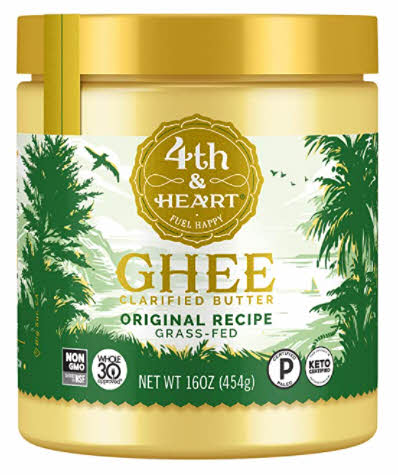
The “Bad” Oils to Avoid

We are not going to go into a lengthy list of each bad oil and why it is bad for you because the reasons behind one are pretty much the same reasons behind them all.
As we just mentioned, an entire generation was convinced that the food they had been eating for centuries was somehow bad for them, and they should now be consuming all of these new food inventions that just happen to make some people very, very rich. Cue the margarine train!
Of course, we now are beginning to realize this was at the expense of an entire generation’s health, and in our humble opinion, one of the worst culprits is highly processed seed and vegetable oils, and they are found in nearly every processed food.
The mainstream industries that support the subsidization and production of these oils are incredibly savvy at presenting data that shines these oils in a healthy light.
In reality, the polyunsaturated fats (PUFA’s) found in vegetable oils, when heated, tend to oxidize very fast.
In this form, they’re more dangerous to body tissues and can trigger inflammation, a known risk factor for making blood vessel plaques unstable enough to cause a heart attack.
These oils are also much more volatile and sensitive to oxidization from improper storage and light. It is not uncommon for these oils to be rancid before they even make it off the shelf of the grocery store!

Many seed and vegetable oils contain extremely high levels of omega-6 . Both omega-6 and omega-3 fatty acids are essential fatty acids, meaning that you need some of them in your diet because your body can’t produce them.
Throughout evolution, humans got omega-3 and omega-6 in a certain ratio. While this ratio differed between populations, it’s estimated to have been about 1:1. However, in the past century or so, this ratio in the Western diet has shifted dramatically and may be as high as 20:1.
Observational studies have also associated a high intake of omega-6 fat to an increased risk of obesity, heart disease, arthritis, and inflammatory bowel disease.
There are theories that nearly all metabolic disorders are related to the population’s increase in seed oil consumption.

Not all vegetable oils are bad. We have already covered the health benefits of ones like olive and coconut oil. These also differ as they are “pressed oils”, meaning the oil is extracted by sheer pressure being placed on the fruit to extract the oil.
In the case of many vegetable and seed oils, they undergo a process of chemical extraction. The most common solvent used is petroleum-derived hexane.
Those in the mainstream claim there are absolutely no health hazards to humans with hexane, yet traces of these chemical solvents are nearly always found in the final product and can easily irritate highly sensitive people.
The FDA does not set a maximum residue level in foods for hexane, and does not require that food manufacturers test for residues.
When random samples of soy ingredients were tested for hexane residues, levels as high as 21 ppm were found when the maximum acceptable limit should be no more than 10 ppm.
Hexane also poses a health danger to the employees working in food-processing plants because of its neurotoxicity. Hexane is also a highly explosive substance, posing a serious danger to the people who work in the processing plants.
Let’s also not forget that 90% of the seed oils produced in North America come from Genetically Modified crops owned by companies like Monsanto. That alone makes many people avoid purchasing them, regardless of how much the industry tries to convince you of how wonderful they are for your health and the environment.

Although it warrants more study, anecdotally, many people notice a dramatic improvement in their overall health when they limit or avoid consuming these oils and products that contain them.
Storage and Freshness Tips
I’m sure many of us don’t think too much about where to store cooking oils.
Having access to them quickly and conveniently is pretty much the only thing we consider.
But just as oils can degrade with high heat, many oils can slowly oxidize over time if they are not stored properly, causing them to become rancid, which affects the taste and can even make them dangerous to consume.
Here are a few things to keep in mind to ensure your oils stay tasty, (and safe), for as long as possible.
Stay Cool
Most oils should be stored in a cool environment, similar to what you’d find in a wine cellar. While you can refrigerate many oils, most people don’t have the time or patience to heat their oil every time they use it (for many of us this is daily). Like “The Price Is Right”, you want to get as close as you can to refrigeration temperature without going over. For olive oil and many other oils, this will be between 50° and 64° F. Some people will store bulk quantities of oils in their basement or another cold room and then refresh a small bottle as needed.
Avoid Light
Light can quickly degrade an oil, so you should purchase your oils only in dark glass bottles that let in little or no light, and store them in the same manner. Avoid clear or light-colored glass whenever possible.
Avoid Air
Like light, oxygen can quickly degrade your favorite oil, leaving you with a bland, flavorless oil that’s not going to do you or your foods any favors. Choose oils packaged in glass bottles for a good barrier against oxygen and keep the cap tightly closed after opening.
Avoid Showing Off 😉
You probably have that friend whose kitchen looks like the ones you see on TV, with pots hanging from hooks, overflowing bowls of delicious ingredients, and perfectly placed groupings of clear bottles with various colored cooking oils scattered throughout.
Don’t be surprised if those delicious-looking oils showcased in those attractive clear glass bottles are anything but delicious.
After sitting out in a warm kitchen, exposed to continual light, and opened and closed time and time again, that oil is good for one thing and one thing only – disposal.
Cooking oil should be stored and used when needed, not displayed on your countertop. Stick with the hanging cookware and overflowing bowls of goodness, and avoid displaying your oils for the world to see. Your family and your taste buds will thank you.
Bottom Line

Healthy fats are your friend!
Our brains require healthy fats for proper function, and let’s face it, many foods just taste better when they have a little fat in them!
Making the proper choices for your health can be overwhelming and confusing. Industry claims and the science behind them are ever-changing, but hopefully, at least in the case of cooking oils, you have a bit more clarity on making the best choices to serve your cooking needs!
Bon Appetit!
Current Offers



Sale Details:
⚡ Extended To Wed. May 8th⚡
Get Up To 50% off on Multi Packs OR Save An Extra 15% Off Any of Our Already Discounted Bundles!
Just Apply Promo Code:
👉 springsale15 at Checkout 🛒
Shop Now
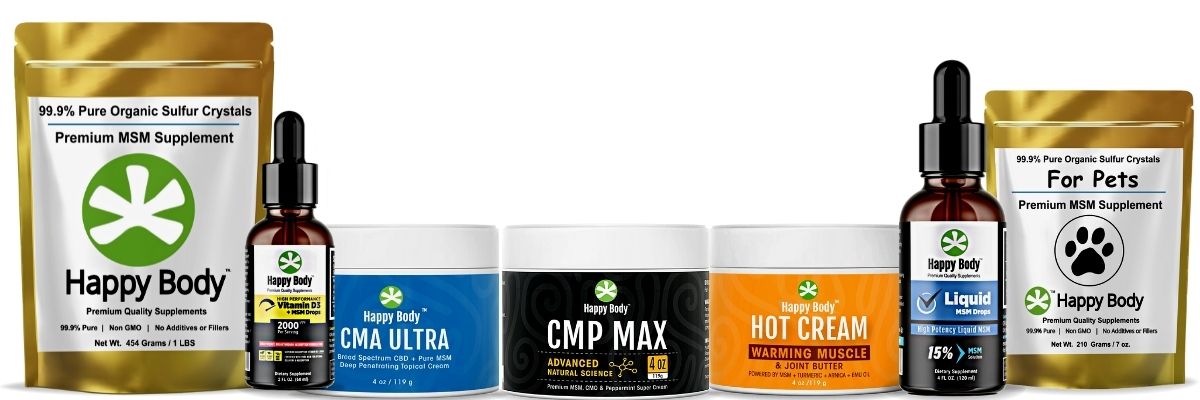

Shop USA Store

All Orders Ship From Our California Warehouse
Shop Canada Store
![]()
All Orders Ship From Our Toronto Warehouse
Happy Body Bundles
Try Different Product Bundles & Save Up To 53% With Free Shipping!

*Note some products are not available in Canada at this time
Shop Bundles USA

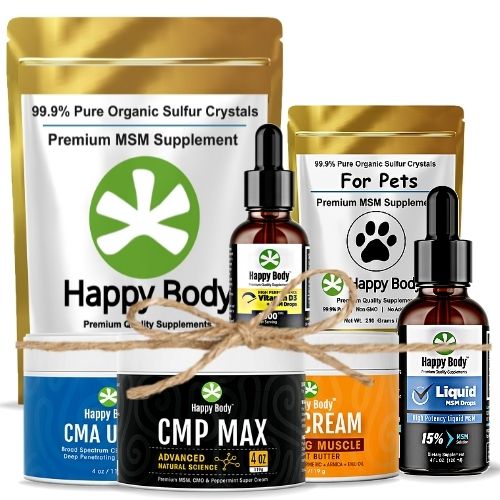
Shop Bundles Canada
![]()
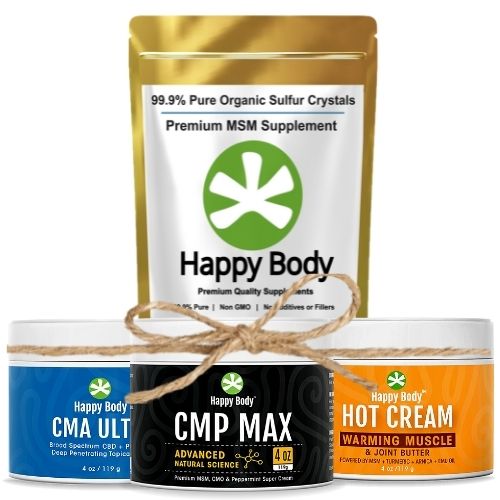
Disclaimer: Information presented on this site is of a general nature used for educational and information purposes only. Statements or opinions about products and health conditions have not been evaluated by the US Food and Drug Administration or Health Canada. Products and information stated herein are not intended to diagnose, treat, cure, or prevent any disease or condition. If you have any concerns about your own health or are wanting to use a new mineral supplement, vitamin or herbal supplement, you should always consult with your physician or other healthcare professional first. Do not use information on this site or on our social media pages as a replacement for validated medical information / opinion, or as a basis for self-diagnosis. This is the same for your pet; always consult with your veterinarian before starting your pet on any new pet supplement or vitamin first.
Pricing: For our website and catalog, the Regular (Reg) Price is also referred to as the MSRP is the “Manufacturer’s Suggested Retail Price.” The MSRP is understood to mean the price at which a manufacturer will recommend a retailer or reseller to sell a product for in stores, on the internet, or in catalogs. For Happy Body Store/Happy Body/HappyBody branded items, the MSRP is calculated based on a varying percentage above the product’s completed production price & associated administration, marketing & logistics. Prices can change at any time for any reason. Pricing & sales offers can change at any time without notice, and at our sole discretion.




